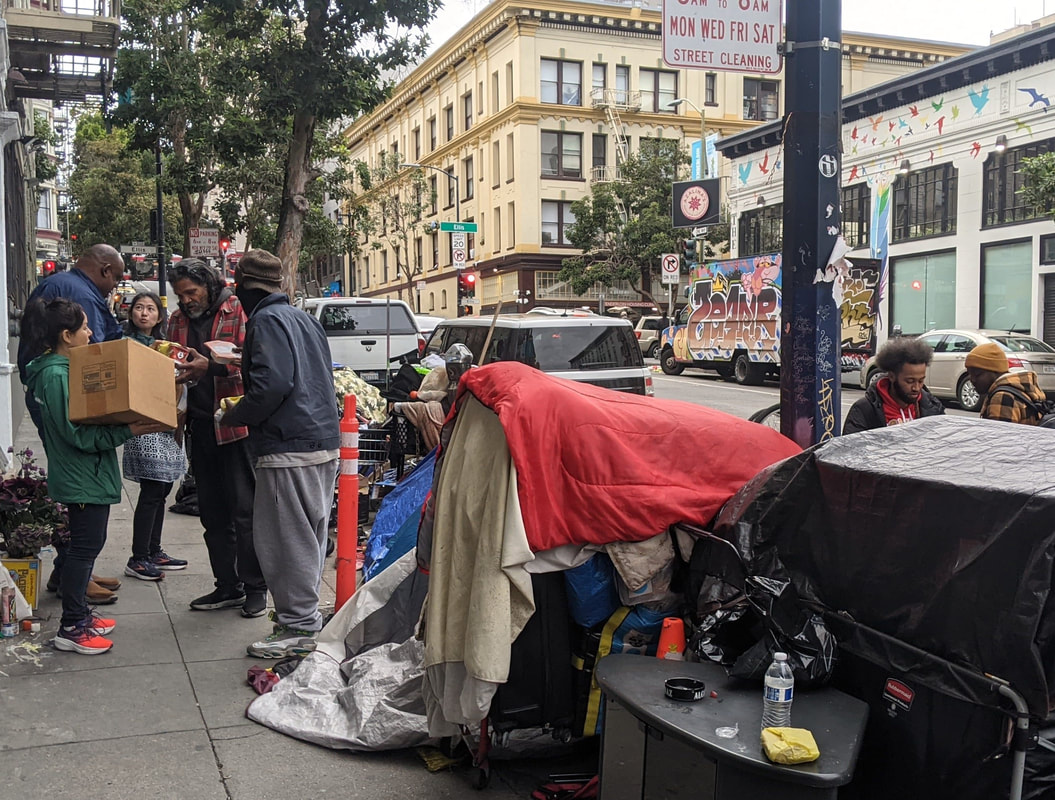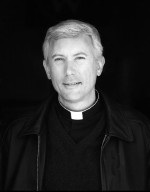This part of San Francisco got its name from the “Tenderloin” district of New York City, a neighborhood so dangerous that police were paid a bonus, out of which they could afford to eat “tenderloin” (e.g., filet mignon). When we moved to the Tenderloin in 1983, it was poor, but not so dangerous. Today, the whole city is more dangerous, and the Tenderloin in particular, because almost all the street dwellers must somehow find enough money to buy their daily fentanyl and meth.
My brother and I lived only three months in the Tenderloin, in a tenement inhabited mostly by Vietnamese immigrants, who were good neighbors. Making friends and saving our poor wages, we were able to find an apartment in a better part of town on the same block as our place of work. But many could not so easily escape the Tenderloin, and I would often drive past our old apartment building on O'Farrell Street thinking of my old Vietnamese neighbors.
Every other week a group from our parish prepares 200 sandwiches, barrels of hot chocolate, and fruit for the street people of the Tenderloin. I go with them about once a month, not only to hand out food and blankets, but to pray with the folks and hear their confessions. Most are Latinos, refugees from Guatemala, Mexico, Nicaragua, and other South American countries; many are African Americans, and some are whites from all over the country who have heard that the City of San Francisco provides food, shelter, and drugs for anyone who wants to live on welfare. Almost all of them want to pray with us, and almost all believe in God, in whom they put their hope. They are some of the most peaceful and grateful people I know.
Our school, Stella Maris Academy, has become a haven for recent immigrants. More than half our school families are first generation arrivals, dramatically portrayed in our most recent school video. We showed this four-minute movie at our Gala last month, but this morning I watched it again with close attention. I noticed that the video begins just two blocks from where my brother and I arrived in June of 1983. It shows Leandro, one of our fourth graders, getting on a public bus near the Tenderloin apartment where his family lives.
Leandro’s family emigrated from Bolivia a few years ago, where both Mom and Dad were professionals. Here in San Francisco Dad is a janitor and Mom is getting her nursing degree. They can only afford a small apartment in the Tenderloin, but they are working their way up the economic ladder, as most of us do. One way forward is a good education for their two children, and they’ve chosen Stella Maris Academy because a classical Catholic education provides integrated knowledge, not just isolated data points. Children are more joyful and peaceful when they know where they’ve come from and where they are going. As Leandro says in the video, "The teachers don’t have to deal with a lot of problems here, while in my other school they had to deal with a lot of problems."
The video portrays the remarkable experience of so many immigrant families in America, from the seventeenth century all the way to the present. Most of these immigrants are invisible to most of us, but their stories are most inspiring. Have a look at our video, and I’m sure you will also be inspired: Stella Maris Video 2024



 RSS Feed
RSS Feed